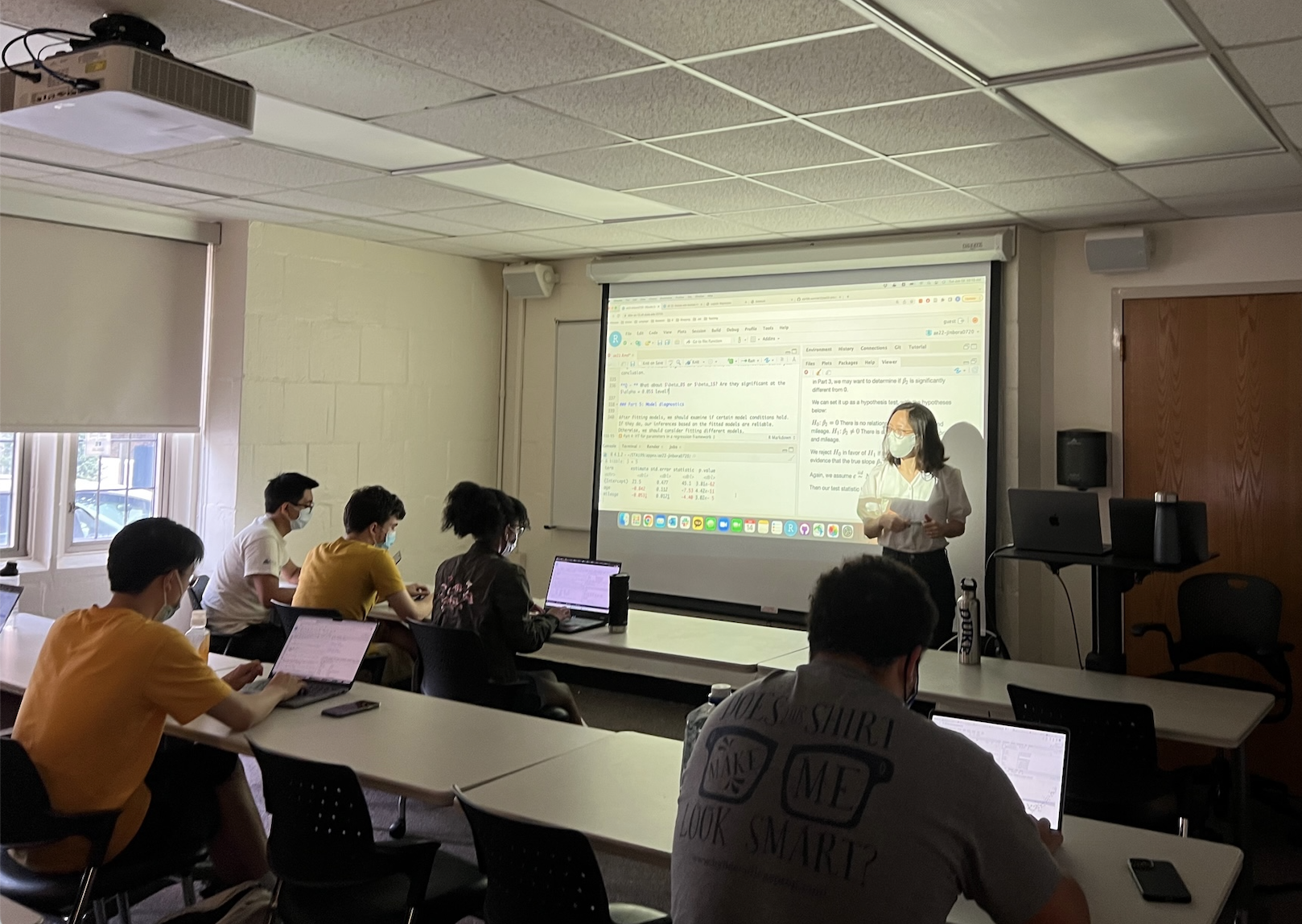Bora Jin
Postdoctoral fellow
Johns Hopkins University
About Me
I’m a postdoctoral fellow working with Abhirup Datta in the department of Biostatistics at Johns Hopkins University. I received my PhD in Statistical Science from Duke University under the supervision of Amy H. Herring and David Dunson. My research interests include Bayesian hierarchical methods and spatial modeling, with a focus on environmental applications. I care about computational efficiency, model flexibility, and interpretability.
Interests
- Environmental health
- Spatial statistics
- Hierarchical models
- Latent factor models
- Bayesian methods
- Causal inference
Education
-
Ph.D. in Statistics, 2023
Duke University
-
M.A. in Statistics, 2017
Korea University
-
B.A. in Statistics, 2015
Korea University
Research
Teaching
Teaching Assistant
Spatial Topics: Latent Process Modeling (STA 790-1)
Teaching Assistant and Course Organizer
Introduction to Data Science and Statistical Thinking (STA199)
Instructor
- Introduction to Data Science and Statistical Thinking (STA199)
- 2022 Summer Session I
- Course trailer
- Course website

Teaching Assistant
Case Studies in the Practice of Statistics (STA440)
Guest Lecture
Spatial Statistics (STAT141)
Teaching Assistant
Theory and Methods of Statistical Learning and Inference (STA432)
Teaching Assistant
Statistics (STA250)
Teaching Assistant
- Introduction to Probability Theory (STAT201)
- Topics in Mathematical Statistics (STAT412)